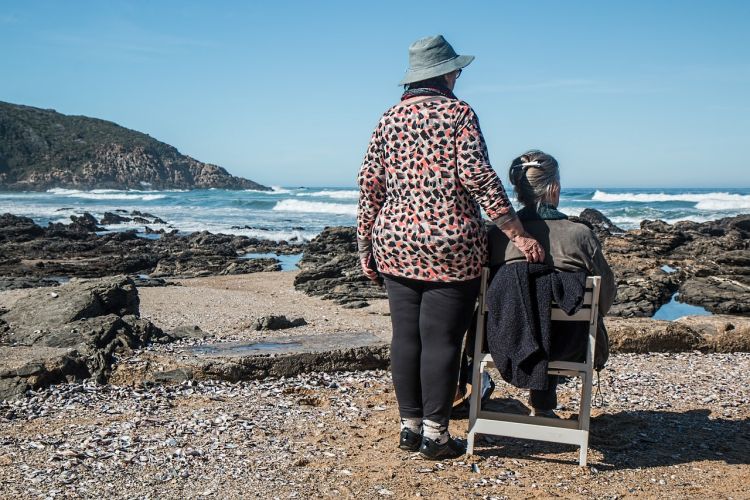Asking questions is like sending email. We do it many times each day, mostly without thinking. Our patterns are familiar and comfortable.
But questions, like email, are a foundational way we interact with other people. We all have room to improve.
The Importance of Questions
Questions are the way we learn. Without questions, you’ll have no understanding, no wisdom, no growth.
This is obvious in the world of facts and ideas. Where was the bicycle invented? What are the drawbacks of socialism? We don’t often get answers without questions.
But this is also (and more importantly) true with people. Questions drive conversations, and better questions lead deeper. A good question sidesteps small talk and draws out ideas and passions—it makes space to hear a person’s heartbeat.
Because questions are a key way to get to know other people, they are vital for being a neighborly human. And for the Christian, they are essential.
We all want to grow in our love for other people. So how can we improve in this area?
How to Improve
I offer no cheat sheet. You won’t find “5 easy tricks” here.
Instead, I have some hard news: To ask better questions, you need to grow. For most of us, the barrier to good conversations is our selfishness and our lack of love for God and neighbor.
Be Curious
Curious people are a delight. Instead of making polite conversation, they take an interest in you. They make good eye contact, they follow up, and they think about your words before responding.
Curious people are always learning. They are intrigued by everything from sea turtles to Saturn, from the periodic table to the printing press. And curious Christians are fascinated by their neighbors.
Growing in curiosity begins with worshiping God as creator. If God is creative, infinite, and wise, then everything he makes—from bamboo to Barbara in HR—is worth investigating. Any Christian who loves God and worships him as creator will never be bored. Everything is interesting; everyone is interesting.
Curious people reject the simplistic reflex that files people in boxes. He’s a gun-loving Republican. She’s a liberal academic. God makes people individually, and love demands we get to know people instead of making assumptions.
Be Humble
Honest questions involve admitting we don’t know the answer. We speak up because we lack some knowledge or explanation.
But no one likes looking ignorant or naïve. So, depending on the listening audience or our conversation partner, we keep silent. We don’t mind confessing our limitations in the abstract, but when a specific person learns of a specific deficit of ours, it feels like torture.
In order to ask better questions, we must make peace with looking silly. Take a sledgehammer to your fascade of omniscience. God knows everything and you do not. That doesn’t make you weak or stupid, it makes you human. You’re only weak if you care more about the opinion of others than seeking the truth in love.
Listen
Many of us need to hear this word from James again and again.
Know this, my beloved brothers: let every person be quick to hear, slow to speak, slow to anger; for the anger of man does not produce the righteousness of God. (James 1:19–20, ESV)
So often we only listen up to a point. We think of a response or a connection to our experience, and we start looking to jump back in. We ignore the other person by looking out for ourselves.
We must repent of selfishness in conversations. We can only ask good questions as we hear the other person and advance the conversation accordingly.
Listening requires a loving focus on the other person. With man this is impossible, but all things are possible with God because of Jesus.
Love Your Neighbor
Christians must be concerned about loving our neighbors, and the skill of asking good questions is crucial for the spread of the gospel.
Evangelism is much more than keeping a tally of monthly gospel shares. This approach makes the gospel seem like a water balloon we’re just waiting to pop over a person’s head. (Got one!) It smooths out distinctions between people and implies our task is limited to one conversation. We’re tempted to shoehorn the gospel in where it doesn’t belong or where its introduction is premature.
The gospel is rich, full, and deep, and it answers all of life’s questions and difficulties. But if we don’t know our friend’s struggles, they won’t see how the gospel addresses them personally.
Think through your conversational patterns and repent of them where appropriate. Take up the task of asking good questions of your friends. And pray for opportunities to introduce them to Jesus.
This isn’t just strategic and winsome, it’s the loving way forward.
Some of the ideas in this post were inspired by an interview with the author Malcolm Gladwell on Tim Ferriss’s podcast. Skip ahead to the 41-minute mark to hear Gladwell talk about the best question-asker he knows: his father.
Post credit | Photo credit



